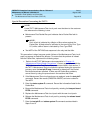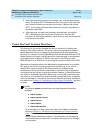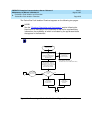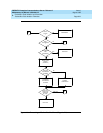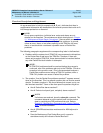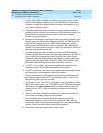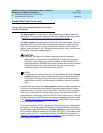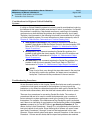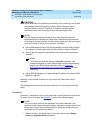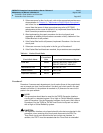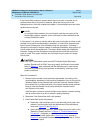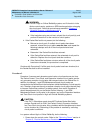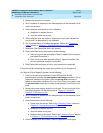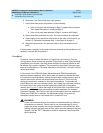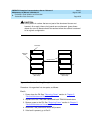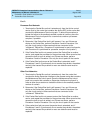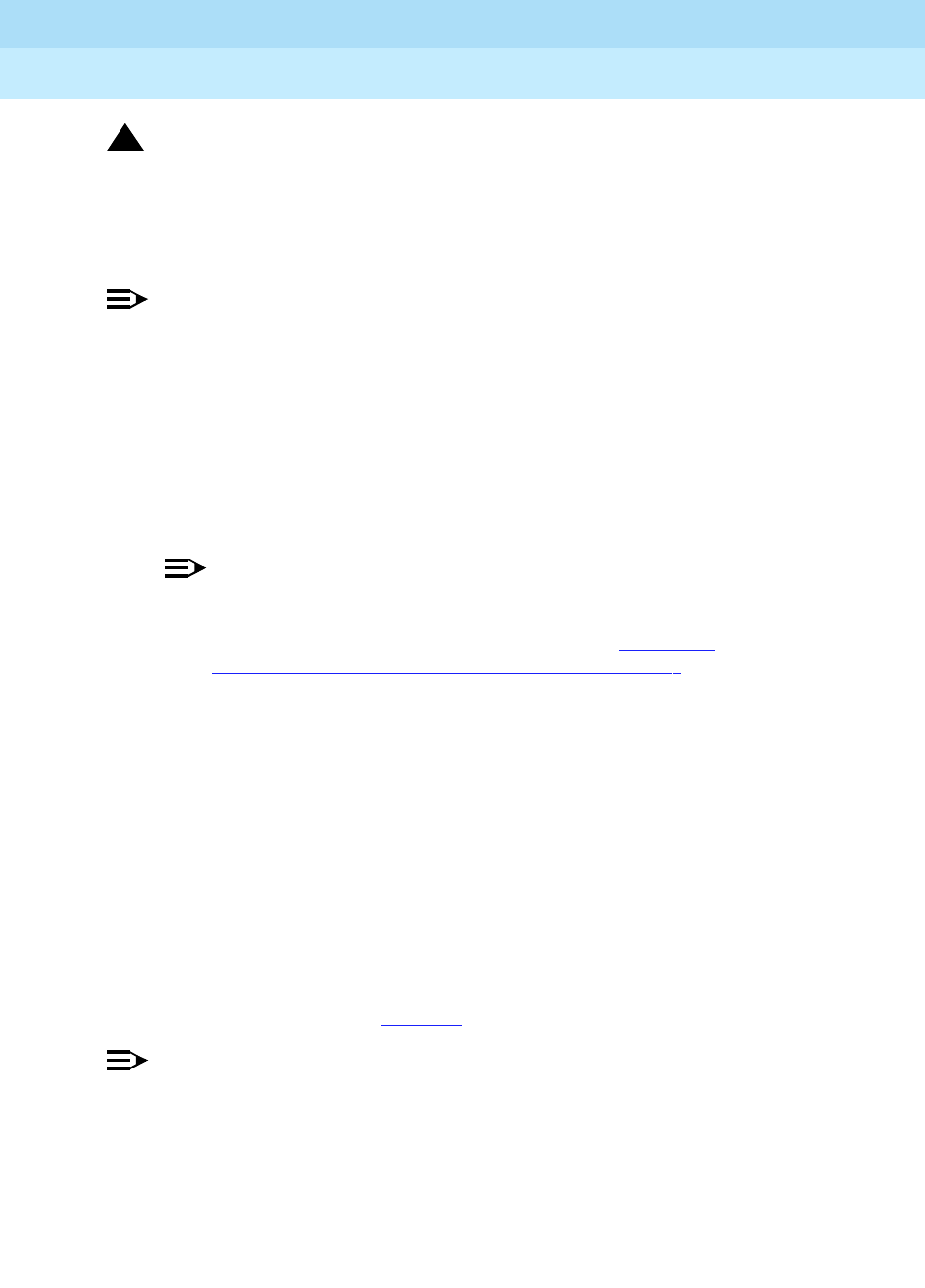
DEFINITY Enterprise Communications Server Release 6
Maintenance for R6vs/si
555-230-127
Issue 1
August 1997
Packet Bus Fault Isolation and Correction
Page 9-26Packet Bus Fault Correction
9
!
CAUTION:
Since Packet Bus fault isolation procedures involve removing circuit packs
and possibly disconnecting entire carriers, these procedure have a
profound effect on service. Therefore, if possible, implement these
procedures after hours or during hours of minimum system use.
NOTE:
Each of these procedures contains one or more steps that require a
determination as to whether the Packet Bus problem has been resolved.
Accordingly, several condition checks must be performed. We can present
each such check in the form of a question, as follows:
■ Did the Maintenance/Test circuit pack standalone mode initially indicate
the existence of faulty leads, and are these leads no longer indicated?
■ Have all alarms against the Packet Bus and Packet circuit packs been
resolved?
NOTE:
If all alarms are resolved, issue the clear pkt command. This
command attempts to put the switch back into the service state by
resolving any BRI problems that exist. Refer to Chapter 8,
‘‘Maintenance Commands and Trouble-Clearing Aids’’, for more
information.
■ Are all ISDN-BRI stations and data modules as well as any relevant ASAI
adjuncts in service?
Note that if one of these conditions is not yet met, the others need not be
checked.
The following sections discuss the four procedures for correcting Packet Bus
faults.
Procedure 1
Procedure 1 determines if any circuit packs that use the Packet Bus have faults.
For each circuit pack type (see Table 9-1
), perform the following steps:
NOTE:
The circuit packs need not be checked in the order presented
if the
flowchart in this chapter has been followed
. However, if newly added circuit
packs are involved, check these packs first, inasmuch as the packs are
most likely to have caused a problem.
1. Display the Error and Alarm Logs for the circuit pack via the display
errors and display alarms commands.



